Your Guide to Selecting the Right Conversational AI Platform
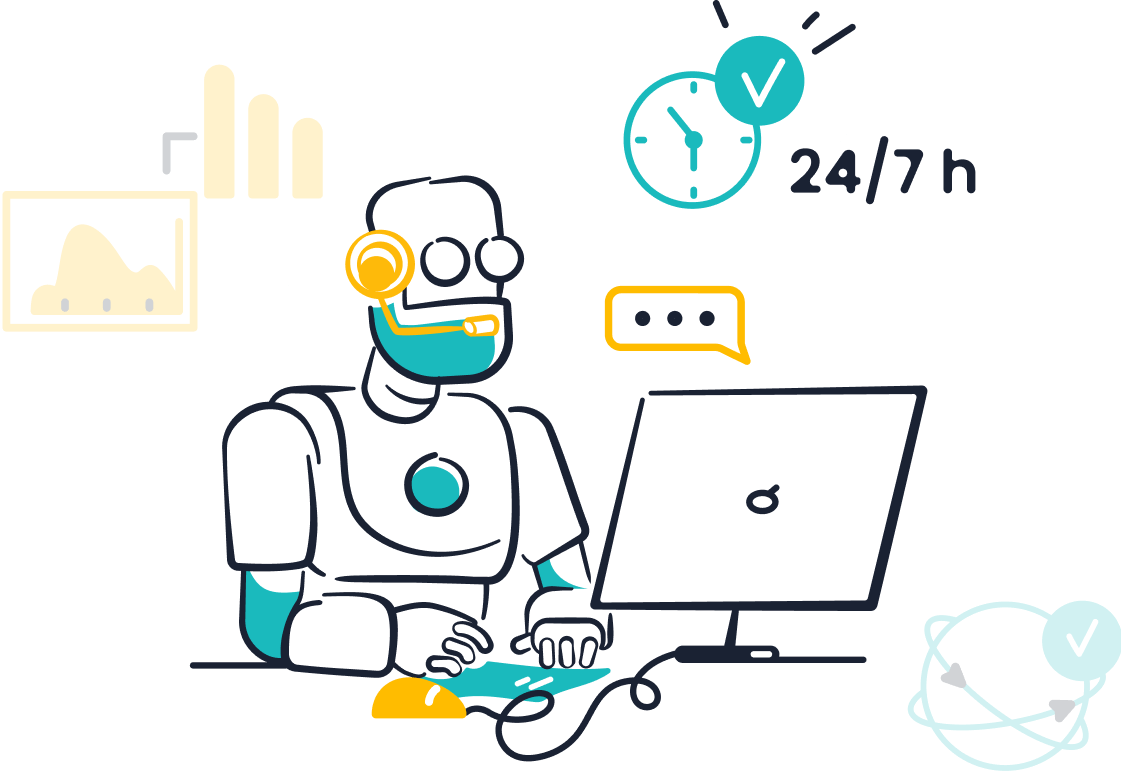
Imagine walking into a store and instantly finding answers to your questions without waiting for a sales associate. That’s the magic conversational AI brings to customer service. It’s not just about convenience; it’s about creating meaningful connections with customers. Over 73% of shoppers believe AI improves their experience, and companies offering exceptional customer service grow revenues 4%-8% faster than their competitors. Conversational AI doesn’t just enhance interactions; it boosts average order values by up to 47%, proving its impact on business success.
Yet, picking the right platform can feel overwhelming. With so many conversational AI chatbot companies promising the moon, how do you make an informed decision? The key lies in understanding your needs and the platform’s capabilities. Brands like Sobot simplify this process, offering solutions tailored to modern customer demands. Stick around, and you’ll discover actionable steps to choose the perfect fit for your business.
Understanding Conversational AI

What is Conversational AI and How Does It Work?
Conversational AI is the technology behind chatbots and virtual assistants that interact with you in a human-like way. It uses natural language processing (NLP) and machine learning to understand, respond, and learn from conversations. Think of it as a smart system that can answer questions, provide recommendations, and even escalate issues to human agents when needed.
Here’s a quick breakdown of how it works:
| Feature | Description |
|---|---|
| Context retention | Maintains coherence in conversations across multiple sessions. |
| Clear transparency | Provides users with an understanding of the chatbot’s capabilities and limitations. |
| Seamless escalation | Allows for smooth transition to a human representative when the AI reaches its limits. |
| Data-driven personalization | Customizes suggestions based on previous interactions and user profile data. |
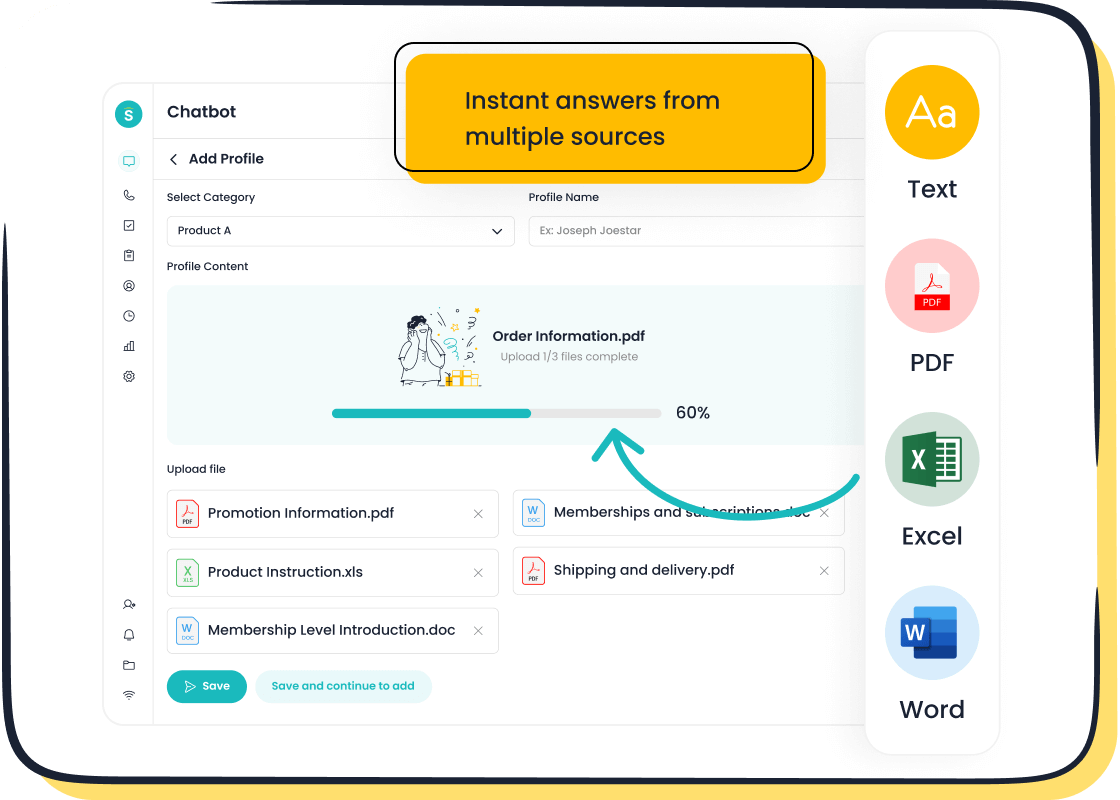
Platforms like Sobot leverage these features to deliver seamless customer experiences. For example, Sobot’s AI Chatbot uses a knowledge base built from articles and PDFs to provide instant replies, ensuring your customers always get accurate answers.
Benefits of Conversational AI for Customer Service
Why should you care about conversational AI? Because it transforms customer service. It’s not just about answering questions; it’s about creating personalized experiences that keep customers coming back.
Here’s what the numbers say:
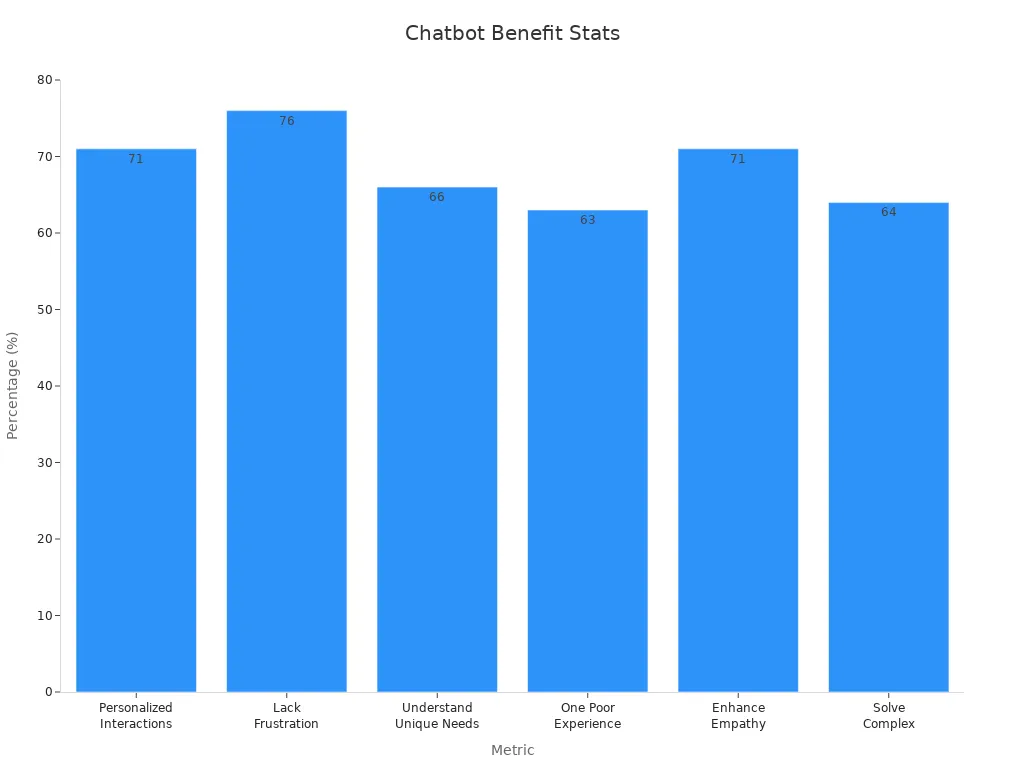

For instance, 71% of customers expect personalized interactions, and 63% will leave after one poor experience. Conversational AI helps you meet these expectations by offering tailored responses and proactive support. Sobot’s AI Chatbot goes a step further, boosting conversions by 20% through smart self-service and real-time intent assistance. It’s not just about saving costs; it’s about enhancing empathy and building trust.
Challenges Businesses Face with Conversational AI Implementation
Implementing conversational AI isn’t always smooth sailing. You might face resistance from employees worried about job security or struggle to integrate AI with legacy systems.
| Challenge | Description |
|---|---|
| Internal Resistance | Employees, especially older executives, are often hesitant about adopting AI due to job security fears. |
| Integration Difficulties | Many businesses struggle to integrate AI with existing legacy systems, which complicates implementation. |
| Lack of Knowledge and Skills | There is a general lack of understanding and skills related to AI among employees, hindering adoption. |
Some employees fear job loss, while others distrust AI’s capabilities. Younger staff tend to adapt faster, but older management may resist change. Platforms like Sobot simplify this process by offering no-code solutions and robust training, ensuring your team feels confident and supported during the transition.
Steps to Define Your Business Goals and Needs
Identifying Customer Service Objectives

Before diving into conversational AI, you need to ask yourself: What do you want to achieve? Are you looking to reduce response times, improve customer satisfaction, or cut operational costs? Defining clear customer service objectives is the first step to success. For instance, if your goal is to handle high ticket volumes efficiently, a robust AI-powered chatbot like Sobot’s can be a game-changer. It resolves repetitive queries 24/7, saving up to 50% on agent costs while boosting productivity by 70%.
Industry benchmarks show that conversational AI addresses common challenges like low satisfaction and high churn rates. By adopting AI, businesses enhance user engagement and retention, driving sales growth. To measure success, focus on metrics like Average Handling Time (AHT), Customer Satisfaction (CSAT), and Resolved on Automation Rate (ROAR). These indicators help you evaluate whether your AI platform aligns with your goals.
Pro Tip: Start small. Focus on one or two objectives, like improving response time or increasing resolution rates, before expanding your AI capabilities.
Understanding Your Target Audience and Use Cases
Who are your customers, and what do they need? Understanding your audience is crucial for choosing the right conversational AI platform. Analyze demographics, behaviors, and preferences to tailor AI interactions. For example, if your audience spans multiple countries, a multilingual chatbot like Sobot’s ensures seamless communication in their preferred language.
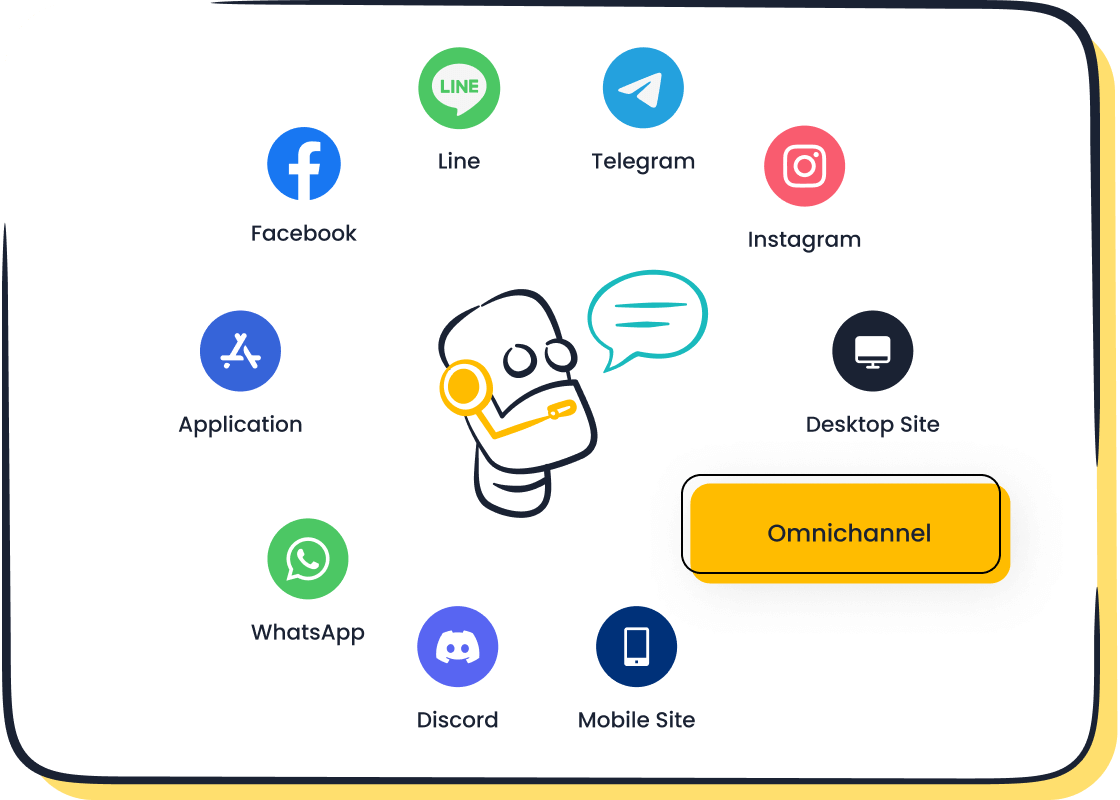
Consider your use cases too. Are you aiming to provide instant support, upsell products, or guide users through complex processes? Platforms like Sobot excel in diverse scenarios, from retail to financial services. For instance, OPPO leveraged Sobot’s chatbot to handle repetitive queries during peak shopping periods, achieving an 83% resolution rate and a 57% increase in repurchase rates.
Here’s a quick checklist to define your audience and use cases:
- Identify user demographics (age, location, language).
- Track user actions to understand their needs.
- Pinpoint high-impact use cases, like reducing cart abandonment or automating FAQs.
Did You Know? Personalized experiences increase user engagement and satisfaction. A well-designed sales chatbot can even boost conversions by 20%.
Prioritizing Features Based on Business Needs
Not all conversational AI platforms are created equal. To make an informed decision, prioritize features that align with your business goals. Start by listing your “must-haves.” For example, if omnichannel support is critical, ensure the platform integrates with channels like WhatsApp, email, and social media. Sobot’s chatbot offers this flexibility, making it ideal for businesses with diverse customer touchpoints.
Frameworks like the MoSCoW Method can help you prioritize. Categorize features as “Must have,” “Should have,” “Could have,” and “Won’t have.” For instance:
| Priority | Feature Example |
|---|---|
| Must Have | Multilingual support, 24/7 availability |
| Should Have | Advanced analytics, proactive messaging |
| Could Have | AI-driven product recommendations |
| Won’t Have | Features irrelevant to your industry |
Remember, the right features depend on your unique needs. If you’re in retail, focus on tools that reduce cart abandonment. If you’re in financial services, prioritize security and compliance. Sobot’s AI solutions cater to various industries, offering customizable features to meet specific demands.
Key Insight: Avoid the “one-size-fits-all” trap. Align your platform’s features with your business goals to maximize ROI.
Evaluating Conversational AI Platform Features

Key Features to Look for in the Best AI Chatbot
Choosing the best AI chatbot for your business starts with understanding the features that matter most. Not all chatbots are created equal, and the right one can transform your customer service experience. Here’s what you should look for:
- Ease of Use: A user-friendly interface is essential. You don’t want to spend hours figuring out how to set it up. Platforms like Sobot offer a no-code, point-and-click interface, making it easy for anyone to design workflows.
- Integration Capabilities: Your chatbot should work seamlessly with tools you already use, like Salesforce or SAP. This ensures smooth data flow and better customer insights.
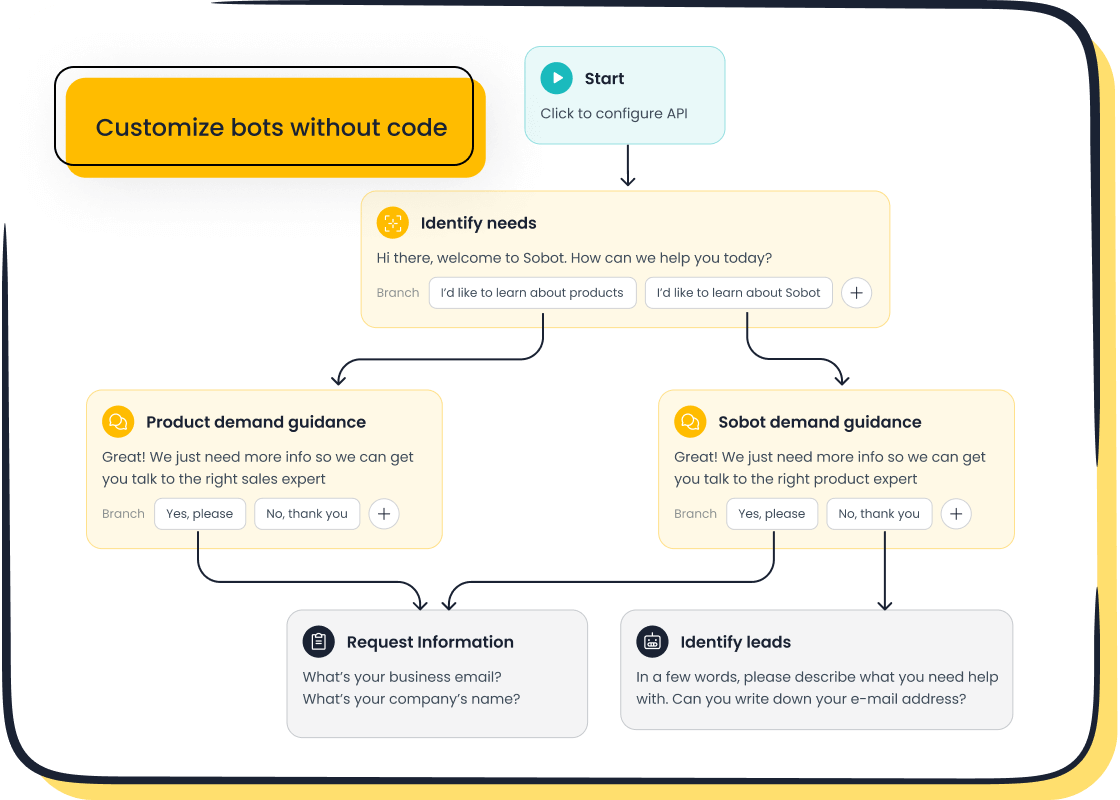
- Conversational Abilities: The chatbot must understand context, retain information, and provide human-like responses. Sobot’s AI chatbot excels here, using a knowledge base to deliver accurate, instant replies.
- Data Security: Protecting customer data is non-negotiable. Look for platforms with strong encryption and compliance with regulations like GDPR.
- Scalability: As your business grows, your chatbot should grow with you. Sobot’s AI chatbot handles high volumes of queries without breaking a sweat.
These features ensure your chatbot isn’t just functional but also a valuable asset for your business. For example, Sobot’s chatbot improves productivity by 70% and cuts costs by up to 50%, making it a smart investment.
Pro Tip: Always test the chatbot’s ability to handle multiple conversations simultaneously. This ensures it can keep up with your customers’ demands.
Importance of Multichannel Support and Integration
Your customers interact with your brand across various platforms—email, social media, live chat, and more. A conversational AI platform with robust multichannel support ensures you’re meeting them where they are. Why does this matter? Because consistent experiences across channels build trust and loyalty.
Here’s how multichannel support impacts your business:
| Metric | Importance |
|---|---|
| Response Times | Faster responses improve customer satisfaction and retention. |
| Resolution Rates | Higher rates indicate effective problem-solving across all channels. |
| Customer Feedback | Insights from multiple platforms help you refine your strategies. |
Sobot’s AI chatbot offers omnichannel support, integrating seamlessly with WhatsApp, SMS, and email. This means your customers get the same high-quality service, whether they’re messaging you on social media or chatting on your website. For instance, OPPO used Sobot’s chatbot to unify its global customer channels, achieving an 83% resolution rate and a 94% positive feedback rate.
Did You Know? Businesses with strong omnichannel strategies retain 89% of their customers, compared to 33% for those without.
Analytics, Reporting, and Customization Capabilities
Data is the backbone of any successful customer service strategy. A good conversational AI platform doesn’t just handle queries; it provides insights that help you improve. Look for these analytics and customization features:
- Real-Time Dashboards: Platforms like Sobot offer customizable dashboards that give you a clear view of performance metrics like resolution rates and customer satisfaction.
- Journey-Based Reporting: This helps you track customer interactions across touchpoints, identifying areas for improvement. For example, ActiveCampaign reduced its ad budget by 50% while hitting revenue targets using journey-based reporting.
- Customizable Workflows: Every business is unique. Your AI chatbot should adapt to your needs, not the other way around. Sobot’s chatbot allows you to design workflows without any coding, ensuring it fits your specific use cases.
- Actionable Insights: Advanced analytics help you understand customer behavior, optimize your knowledge base, and improve response times.
For example, a leading digital marketing agency used a custom portal to consolidate data from various platforms. This improved decision-making and client satisfaction. Similarly, Sobot’s reporting tools help businesses identify gaps in their customer service, ensuring continuous improvement.
Key Insight: Customization isn’t just a nice-to-have; it’s a must-have. Tailored solutions lead to better customer experiences and higher ROI.
Assessing Scalability, Budget, and Vendor Support
Ensuring Scalability for Business Growth
Your business isn’t static, so your conversational AI platform shouldn’t be either. Scalability is key to ensuring your platform grows alongside your customer base. Imagine handling thousands of inquiries during peak seasons without hiring additional agents. That’s the power of scalable AI.
Scalable platforms efficiently manage increased workloads without compromising performance. They save time, improve collaboration, and provide real-time insights that help you adapt to market changes. For example, businesses using conversational AI report revenue growth of 10-15% due to improved customer service and operational efficiency. Platforms like Sobot are designed with scalability in mind, offering omnichannel support and AI-driven insights to handle growing demands seamlessly.
| Metric | Description |
|---|---|
| Time Savings | Reduces manual data retrieval and analysis, enabling quicker decision-making. |
| Scalability | Handles increased inquiries without proportional resource increases, supporting business growth. |
Pro Tip: Choose a platform with built-in scalability features to avoid costly upgrades later.
Aligning the Platform with Your Budget
Budget constraints shouldn’t limit your ability to deliver exceptional customer service. Aligning your conversational AI platform with your financial goals requires a clear understanding of costs. Start by assessing both initial and ongoing expenses, including development, integration, and maintenance.
A thorough cost analysis ensures you get the best return on investment. For instance, Sobot’s AI chatbot saves up to 50% on agent costs by automating repetitive queries. It also boosts productivity by 70%, making it a cost-effective solution for businesses of all sizes. The financial industry has seen significant benefits from adopting conversational AI, with improved efficiency and personalization driving growth.
Did You Know? Businesses that invest in conversational AI often see a 20% increase in conversions, proving its value beyond cost savings.
Evaluating Vendor Support and Training Options
Vendor support can make or break your experience with conversational AI. Reliable vendors offer quick issue resolution, minimizing downtime and ensuring smooth operations. Look for platforms with Service Level Agreements (SLAs) that guarantee response times and support quality.
Training is equally important. Vendors like Sobot provide robust training options to help your team master the platform. Conversational AI can even assist with training by simulating scenarios and presenting materials, improving knowledge retention. Regular performance reviews and technical evaluations ensure your platform stays aligned with your business needs.
| Performance Metrics | Description |
|---|---|
| Balanced Scorecards | Evaluate vendors across operational performance, technical capabilities, and innovation. |
| ROI from Mature Vendor Management | Research shows a 26% higher ROI from effective vendor management functions. |
Key Insight: Strong vendor support and training options empower your team to maximize the platform’s potential.
Common Pitfalls to Avoid When Choosing a Platform
Overlooking Integration with Existing Systems
Imagine investing in a conversational AI platform only to find out it doesn’t work with your current tools. Frustrating, right? Integration is one of the most overlooked aspects when choosing a platform. If your chatbot can’t connect with your CRM, email, or social media channels, you’ll end up with fragmented data and a disjointed customer experience.
Here’s the reality: 68% of customers expect chatbots to solve their problems quickly. But without proper integration, even the smartest AI can’t deliver. Platforms like Sobot excel in this area by offering seamless integration with tools like WhatsApp, email, and live chat. This ensures your team has all the information they need to provide fast, accurate support.
Tip: Before committing, list all the systems your platform needs to integrate with. Then, confirm the platform supports them.
Focusing Solely on Cost Over Value
It’s tempting to pick the cheapest option, but focusing only on cost can backfire. A cost-benefit analysis shows that prioritizing price over value often leads to missed opportunities. For example, businesses that invest in high-quality conversational AI platforms save up to $1 million annually on customer service expenses. That’s because these platforms don’t just cut costs—they improve efficiency and customer satisfaction.
Think about it this way: a platform like Sobot might seem like an investment upfront, but its ability to automate repetitive tasks and boost productivity by 70% pays off in the long run. Plus, its customizable features help you meet specific business goals, making it a value-packed choice.
Pro Tip: Look beyond the price tag. Consider the platform’s long-term benefits, like scalability, efficiency, and customer retention.
Ignoring User Experience and Ease of Use
A platform packed with features won’t help if it’s too complicated to use. Usability studies reveal that 90% of consumers prefer messaging for business communication, and 85% want to use it for transactions. If your chatbot isn’t intuitive, you risk frustrating both customers and employees.
Simplicity is key. Platforms like Sobot offer no-code interfaces, making it easy for your team to set up and manage workflows. Plus, its natural language processing ensures conversations feel human-like, enhancing the user experience. Whether you’re handling customer inquiries or automating sales, an intuitive platform makes all the difference.
Did You Know? A user-friendly chatbot can handle multiple requests simultaneously, improving efficiency and customer satisfaction.
Why Sobot’s Chatbot is the Right Choice for Your Business
Key Features of Sobot’s AI Chatbot
When it comes to conversational AI chatbot companies, Sobot stands out with its powerful features designed to simplify customer interactions. You’ll find that its unified communication system integrates all your channels—email, WhatsApp, and social media—into one platform. This makes managing inquiries a breeze.
Sobot’s chatbot doesn’t just answer questions; it delivers instant personalized resolutions tailored to each customer’s needs. Whether your customers are asking about product details or troubleshooting issues, the chatbot uses AI to provide accurate responses in seconds. Supervisors can also leverage real-time monitoring and analytics tools to refine strategies and boost team performance.
| Key Feature | Description |
|---|---|
| Unified Communication | Integrates various communication channels into one platform for easier management of inquiries. |
| Instant Personalized Resolutions | Uses AI to provide immediate and tailored responses to customer queries. |
| Real-Time Monitoring & Analytics | Offers tools for supervisors to enhance customer service strategies and team performance. |
These features make Sobot’s chatbot a game-changer for businesses looking to improve customer experience and operational efficiency.
Benefits of Sobot’s Omnichannel Support
Your customers expect seamless interactions across all platforms, and Sobot delivers exactly that. Its omnichannel support ensures consistent service whether your customers reach out via live chat, email, or social media. This unified approach reduces inbound discussion volume by 20% and increases positive feedback to over 96%.
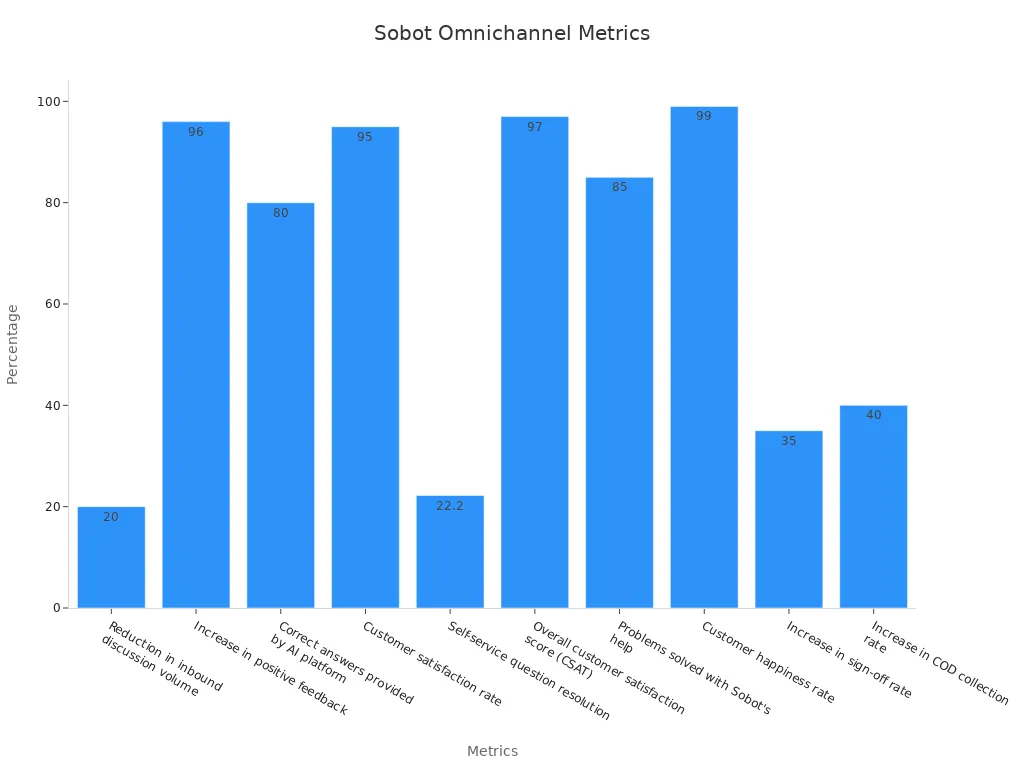
Sobot’s omnichannel capabilities also boost self-service resolution rates by 22.2%, allowing customers to solve their own problems without waiting for an agent. With a customer satisfaction rate of 95% and a happiness rate of 99%, you’ll see how this platform transforms your customer experience.
Real-World Success Stories: OPPO’s Experience with Sobot
OPPO, a global leader in smart devices, faced challenges during peak shopping seasons. High inquiry volumes overwhelmed their agents, leading to long wait times. By partnering with Sobot, OPPO deployed a chatbot to handle repetitive queries, freeing human agents for complex issues.
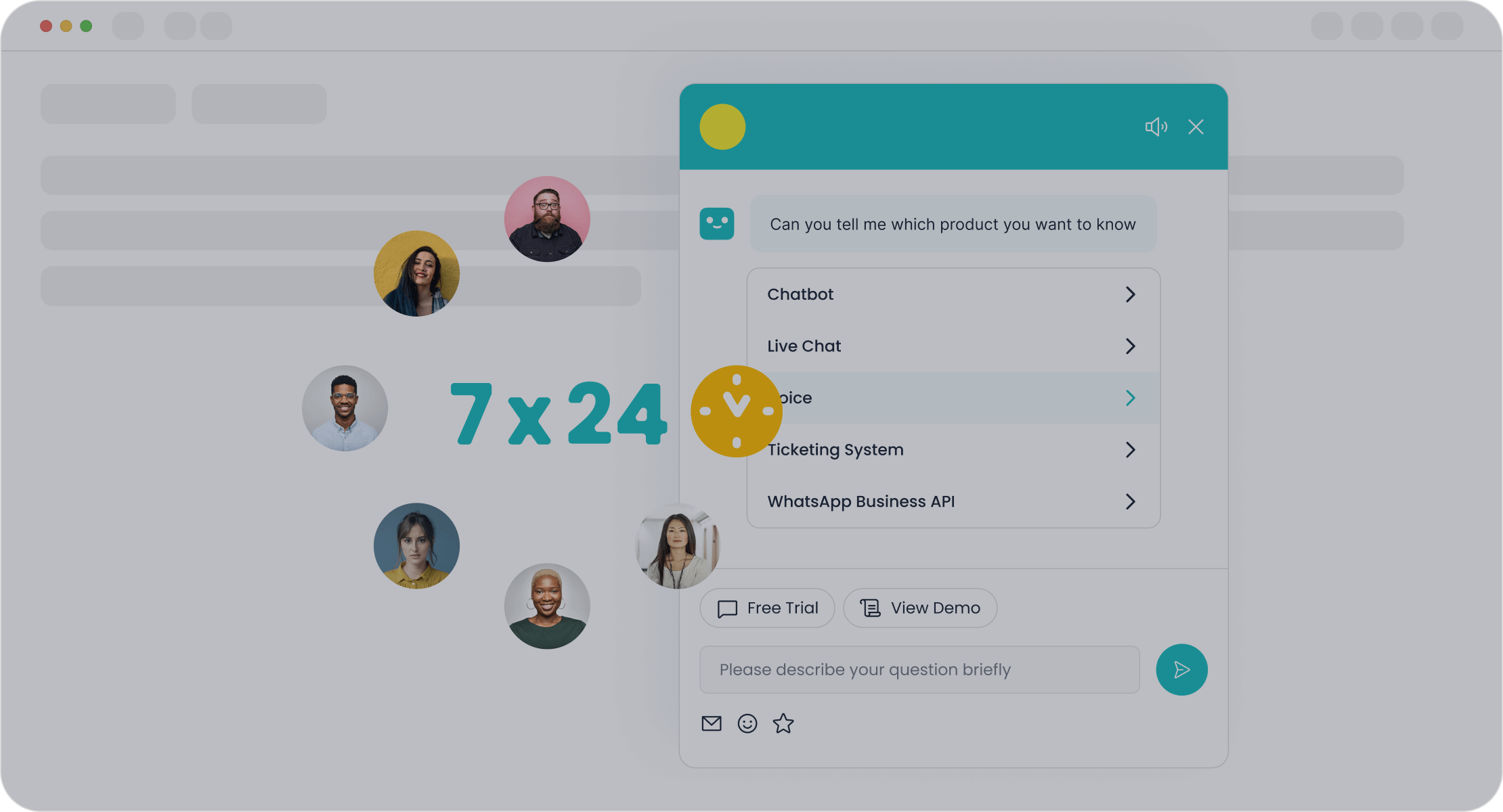
The results were remarkable. OPPO achieved an 83% chatbot resolution rate and a 94% positive feedback rate. Their repurchase rate soared by 57%, thanks to improved service efficiency and optimized customer interactions. Sobot’s integration of global communication channels also eliminated data fragmentation, ensuring seamless operations.
This success story shows how Sobot’s solutions can help businesses like yours thrive in competitive markets.
Choosing the right conversational AI platform doesn’t have to feel overwhelming. Start by defining your goals, understanding your audience, and prioritizing features that align with your needs. Each decision you make should focus on improving customer satisfaction and operational efficiency. Remember, the best platform grows with your business and simplifies your processes.
Sobot’s solutions are designed to meet these demands. Whether you’re looking to automate queries or enhance customer interactions, Sobot offers tools that deliver results. Ready to make a decision that transforms your business? Explore Sobot today and see the difference for yourself.
FAQ
What is the main purpose of a conversational AI platform?
A conversational AI platform automates customer interactions, making your service faster and more efficient. It handles repetitive queries, provides instant answers, and supports your team by escalating complex issues. For example, Sobot’s AI Chatbot improves productivity by 70% and saves up to 50% on agent costs.
Can conversational AI work across multiple communication channels?
Yes! The best platforms, like Sobot, offer omnichannel support. This means your chatbot can interact with customers on WhatsApp, email, social media, and more. It ensures consistent service across all platforms, boosting customer satisfaction and retention rates.
Tip: Omnichannel strategies can increase customer retention by up to 89%.
How does conversational AI improve customer satisfaction?
Conversational AI personalizes interactions by using data from past conversations. It provides quick, accurate responses and operates 24/7. Sobot’s chatbot even offers multilingual support, ensuring every customer feels understood. This approach builds trust and loyalty, leading to higher satisfaction rates.
Is coding required to set up a conversational AI chatbot?
Not at all! Platforms like Sobot make it easy with no-code, point-and-click interfaces. You can design workflows and deploy your chatbot without any technical expertise. This simplicity allows you to focus on enhancing customer experiences instead of worrying about setup.
How do I measure the success of my conversational AI platform?
Track metrics like resolution rates, customer satisfaction (CSAT), and response times. For example, Sobot’s chatbot achieves an 83% resolution rate and a 94% positive feedback rate. These numbers show how well your platform meets customer needs and supports your business goals.
Did You Know? Businesses using conversational AI report a 20% increase in conversions.
See Also
Tips for Selecting the Top Chatbot Solutions
How to Select the Ideal Chat Software for 2024
Navigating AI Solutions for Call Center Operations
